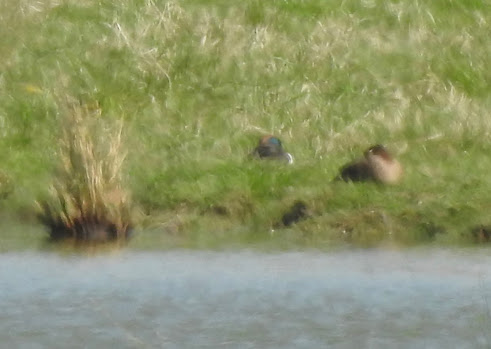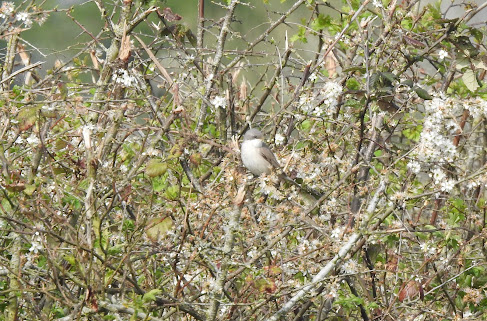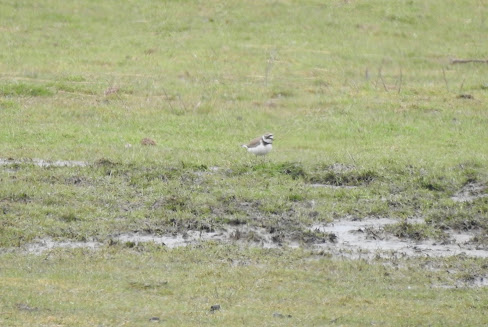My decision to revisit Earlswood Lakes was a bit last minute, but I'm glad I did. It was another cold and cloudy morning, only brightening at around midday.
As expected there were plenty of hirundines flying low over all the lakes, and a text message mid-morning informing me that there was a Red-rumped Swallow at Westwood (near Droitwich) had me checking them pretty regularly. I estimated at least 60 Swallows, 10 House Martins and a similar number of Sand Martins, but nothing to get excited about.
 |
| Swallow |
In the back of my mind I was aware that there had been a Wood Warbler and a Yellow Wagtail at the weekend, so I chose Terry's Pool to walk around first. As usual great views were had of the common birds there, but it wasn't until I returned to Engine Pool that I started to find a few things.
One of two Common Sandpipers was standing on the bit of rubble the contractors who were working on the Lakes last year had allowed to stand proud of the water level.
 |
| Common Sandpiper |
It's not exactly ideal wader habitat, but it's better than nothing.
Half way along the western boundary I noticed two terns resting on the water. They turned out to be Arctic Terns, a Circle tick for me.
 |
| Arctic Terns |
They spent several minutes floating on the water as shown. Interestingly the bills, though blood red and short as they should be, do show the merest hint of dark on the tips of their upper mandibles. This demonstrates the risk of relying too heavily on the bill colour. Its shape and length is a better guide. Better still is the absence of a grey (can be faint on Common when fresh though) wedge on the upper edge of the primary wing feathers, and the narrow grey tips to the underside of the white primaries. The birds showed this feature when in flight but it was hard to capture with my bridge camera. This is my sharpest shot...
 |
| Arctic Tern |
Also present were at least two Common Terns. They were quite vocal, and eventually perched on a buoy showing their relatively long legs, and longer bills which in the case of these two birds was the classic orange-red with obvious black tip.
 |
| Common Terns |
I also spotted a Little Ringed Plover flying around. You've got to feel sorry for this bird. It probably bred here last year when the lakes were partly drained, and has returned from Africa unaware that the Canal and River Trust have completed their work and there will be no more mud. Mind you, I did think I could see a shallow area just off the dam, so if it stays dry it might get lucky.
I walked around Windmill Pool, stopping to watch a female Green Woodpecker licking up ants in the yacht club and enjoyed showing the spectacle to two appreciative dog walkers.
 |
| Green Woodpecker |
Both Common and Lesser Whitethroats were singing, and I also heard a Sedge Warbler near the Red Lion end of the causeway. A gathering of 38 Tufted Ducks was also more than I had been expecting to see, but there was no Yellow Wagtail in the horse paddocks at the far end.
As the cloud lifted, the sun came out and the hirundines dispersed in search of higher flying insects. I could no longer find the Arctic Terns, so I'm guessing they left too.
I think I'm going to put my moth trap out tonight, although the nights are still too cold really. So there may be a supplement to this post tomorrow.
...................................................................................................
So the irony is that although I did put the trap out and attracted five moths of three species, all new for the year, the least regular moth was actually found on the shed during the afternoon while I was earning some brownie points by doing some gardening.
That was a Least Black Arches, only the third I have seen. Presumably they live in the garden.
 |
| Least Black Arches |
The evening's catch was: Swallow Prominent 3, Pebble Prominent 1, Oak-tree Pug 1. To be fair, the temperature fell to just one degree overnight, so it's fortunate there was anything at all.













































